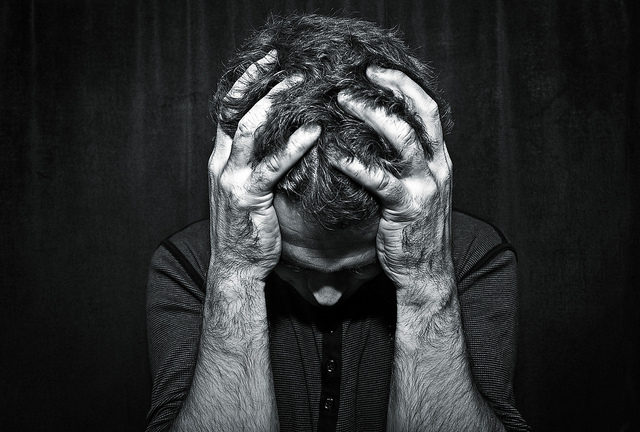It’s very tragic news, the suicide of actor Robin Williams, apparently due to severe depression.
It is a condition that he had suffered from for a long time and had gotten worse over the past few months. There have been reports that Robin Williams may have suffered from Bipolar Disorder rather than depression. There have also been reports that Robin was in the early stages of Parkinsons disease. It was well known that he had also battled addictions during his life.
A change for the worst in a person’s life such as being diagnosed with a terminal illness, relationship breakdowns, and financial crises are significant risk factors for a depressive episode.
Depression carries a risk of suicide. Anybody who expresses suicidal thoughts or intentions should be taken very seriously.
If anyone you know, a family member or friend talks about suicide, contact a professional or a support line immediately.
At Go Psychology (Gold Coast) we specialise in the treatment of depression and have helped many suicidal clients recover to go on an live a meaningful life.
The best way to minimize the potential risk of suicide is to know the risk factors, recognize the warning signs of suicide, and access help. Take these signs seriously. Know how to respond to them. It could save someone’s life.
How Prevalent Is Suicide due to Depression?
Suicide is a preventable public health problem. In Australia suicide is the leading cause of death for people aged between 15 to 45.
The following is research conducted by Lifeline:
Deaths by suicide
- Deaths by suicide have reached a 10-year peak.
- The most recent Australian data (ABS, Causes of Death, 2012) reports deaths due to suicide at 2,535.
- The overall suicide rate in 2012 was 11.0 per 100,000, compared to the 2011 rate of 9.9 per 1,000.
- In 2012, 1,901 males (16.8 per 100,000) and 634 females (5.6 per 100,000) died by suicide.
- This equates to almost seven deaths by suicide in Australia each day.
- Men account for three out of every five deaths by suicide, making suicide the 10th leading cause of death for males.
- For those of Aboriginal and Torres Strait Islander descent, the suicide rate is 2.5 times higher for males and 3.4 times higher for females.
- The most recent data (ABS, Causes of Death, 2012) shows that almost twice as many people died from suicide in Australia, than in road related transport deaths (1,310 vs 2,535).
Suicide attempts
- For every completed suicide, it is estimated that as many as 30 people attempt.
- That’s around 200 attempts per day.
- That’s more than one new attempt in Australia every 10 minutes.
Thoughts of suicide (Suicidal ideation)
- It is estimated that around 250 people make a suicide plan every day.
- It is estimated that around 1,000 people think about suicide every day.
Are There Risk Factors for Suicide?
Risk factors for suicide vary by age, gender, and ethnic group. And risk factors often occur in combinations.
Over 90% of people who die by suicide have clinical depression or another diagnosable mental disorder. Many times, people who die by suicide have a substance abuse problem.
Often they have that problem in combination with other mental disorders.
Adverse or traumatic life events in combination with other risk factors, such as clinical depression, may lead to suicide. But suicide and suicidal behavior are never normal responses to stress.
Other risk factors for suicide include:
- One or more prior suicide attempts
- Family history of mental disorder or substance abuse
- Family history of suicide
- Family violence
- Physical or sexual abuse
- Keeping firearms in the home
- Chronic physical illness, including chronic pain
- Incarceration
- Exposure to the suicidal behavior of others
Are There Warning Signs of Suicide?
Warning signs that someone may be thinking about or planning to commit suicide include:
- Always talking or thinking about death
- Clinical depression — deep sadness, loss of interest, trouble sleeping and eating — that gets worse
- Having a “death wish,” tempting fate by taking risks that could lead to death, such as driving fast or running red lights
- Losing interest in things one used to care about
- Making comments about being hopeless, helpless, or worthless
- Putting affairs in order, tying up loose ends, changing a will
- Saying things like “it would be better if I wasn’t here” or “I want out”
- Sudden, unexpected switch from being very sad to being very calm or appearing to be happy
- Talking about suicide or killing one’s self
- Visiting or calling people to say goodbye
Be especially concerned if a person is exhibiting any of these warning signs and has attempted suicide in the past.
According to the American Foundation for Suicide Prevention, between 20% and 50% of people who commit suicide have had a previous attempt.
Comments from Dr Paul Bowden
I have worked with many suicidal clients from adolescents to the elderly, and the common theme amongst them all is that the suicidal person has lost hope in their life, they cannot see any light at the end of the tunnel, and the challenges they are facing in that moment seem insurmountable.
The bottom line is that if your mind is contemplating suicide then your mind has run out of the ability to come up with solutions to resolve your life situation.
THIS IS THE CUE TO REACH OUT AND SPEAK TO SOMEONE.
A therapist is the best choice, but you can speak to anyone about your thoughts and feelings, and from there access the appropriate treatment.

